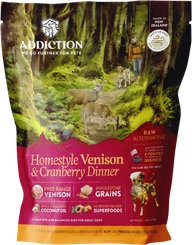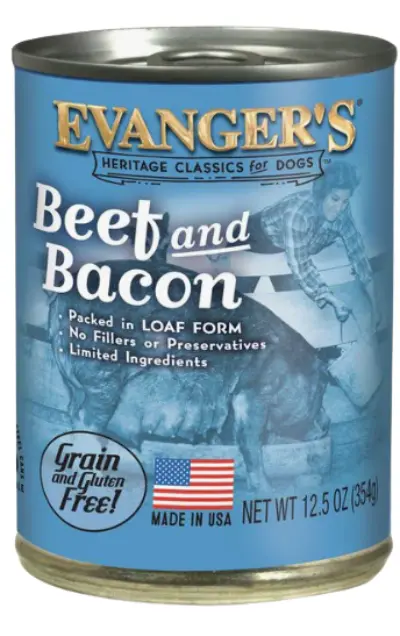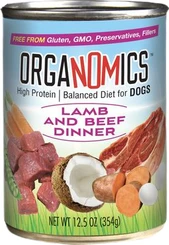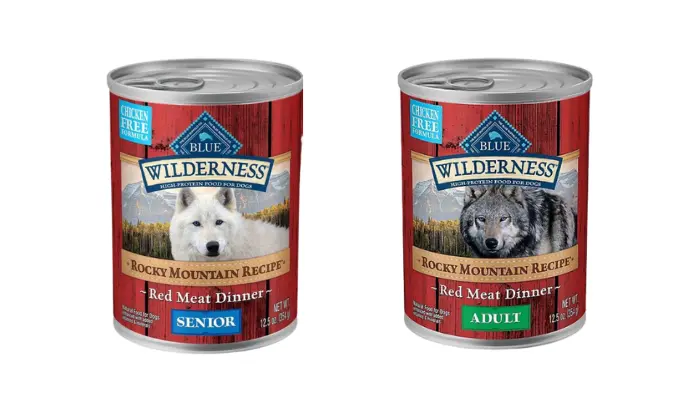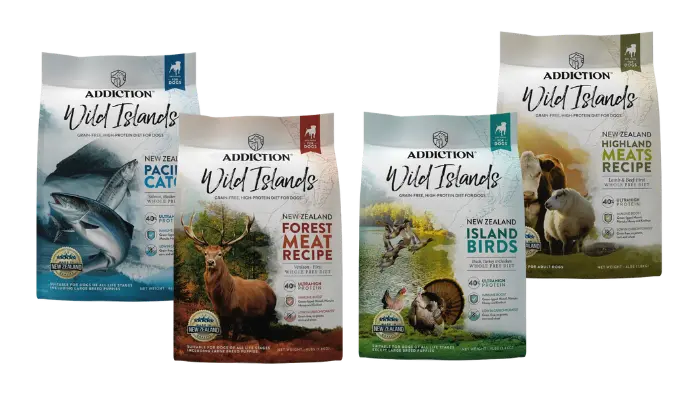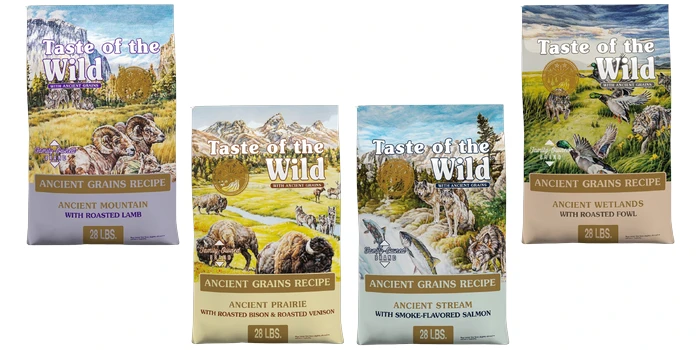As a Chewy affiliate, we earn commissions for qualifying purchases.
Ingredient Splitting in Dog Food: What It Is and How to Spot It
- Author: Samuel James
- Published: October 30, 2025
- Last Updated: October 30, 2025

As a devoted pet parent, you likely spend time analyzing the ingredient panel on your dog’s food bag. You look for real meat, whole grains, and healthy vegetables, believing the list to be a transparent window into what you’re feeding your furry family member. But what if that window was subtly distorted?
What if the list, governed by simple yet exploitable regulations, wasn’t telling you the whole truth?
This is where the practice of ingredient splitting comes into play. It’s a legal but often misleading tactic used by some pet food manufacturers to manipulate the order of ingredients, creating a perception of higher quality than what the formula may actually provide. Understanding ingredient splitting is crucial for any consumer who wants to make truly informed decisions about their dog’s nutrition.
What is Ingredient Splitting?
Ingredient splitting is a labeling strategy where a single component is broken down into multiple sub-components and listed individually on the ingredient list. This is done to lower the apparent concentration of certain ingredients, allowing more desirable-sounding components (like “chicken” or “salmon”) to appear higher on the list.
Ingredients must be listed in descending order by predominance by weight (as formulated). Because of this requirement, manufacturers list each distinct ingredient by name. This is the rule that ingredient splitting takes advantage of. It cleverly circumvents this rule by fracturing a predominant, but less desirable, ingredient into several smaller parts.
A Simple Analogy: The Chocolate Chip Cookie
Imagine you’re listing the ingredients for a chocolate chip cookie recipe. The recipe uses:
- 2 cups of White Flour
- 1.5 cups of Chocolate Chips
- 1 cup of Sugar
The honest ingredient list would be: White Flour, Chocolate Chips, Sugar.
Now, let’s apply ingredient splitting. Suppose you split the 2 cups of white flour into three different types: 1 cup of Wheat Flour, 0.5 cups of Rice Flour, and 0.5 cups of Oat Flour. Suddenly, your list becomes: Chocolate Chips, Wheat Flour, Sugar, Rice Flour, Oat Flour.
At a glance, it now looks like chocolate chips are the primary ingredient, which is highly appealing! In reality, the total flour content (2 cups) still outweighs the chocolate chips (1.5 cups), but the splitting tactic has successfully manipulated the list’s order. This is the core mechanism of ingredient splitting in dog food.
Key points :
- It affects perceived ingredient prominence.
- It’s a labeling tactic, not necessarily fraud, but it can be misleading.
- The practice tends to be used with plant-based ingredients (peas, lentils, potatoes) and sometimes with animal-derived ingredients (chicken meal vs. chicken by-product meal vs. chicken fat).
Why Do Manufacturers Use Ingredient Splitting?
The motivation behind ingredient splitting is almost always marketing. A bag of dog food with “Chicken” as the first ingredient sells better than one with “Corn” or “Wheat” at the top. It creates a “health halo,” leading consumers to believe they are purchasing a premium, protein-rich product.
1. To Push Down Less-Desirable Ingredients:
Fillers like corn, wheat, and soy have received negative press over the years. By splitting corn into “corn gluten meal,” “ground corn,” and “corn bran,” each part weighs less individually, allowing them to fall lower on the list.
2. To Elevate the Perceived Protein Content:
By breaking up a large quantity of a carbohydrate source, the meat ingredient—which is more dense and often weighs less in its raw form—can jump to the coveted first position.
Common Examples of Ingredient Splitting in Dog Food
To spot this practice, you need to know what to look for. Here are some of the most frequent forms :-
Grain and Carbohydrate Split
This is the most classic and widespread example. A manufacturer wanting to avoid listing “Corn” as the first ingredient might use:
- Ground Corn
- Corn Gluten Meal
- Corn Bran
Individually, each of these may appear lower on the list, perhaps after “Chicken Meal.” But if you were to combine the weight of all the corn-derived ingredients, they would likely far surpass the chicken meal and be the true primary ingredient.
The same can be done with other grains:
- Wheat Flour, Wheat Germ, Wheat Middlings
- Brewers Rice, Rice Flour, Rice Bran
Protein Source Split
While less common, ingredient splitting can also occur with protein sources to make a specific meat seem more prominent. For instance, a food might list:
- Chicken
- Chicken Meal
- Chicken Fat
- Chicken Liver
While these are all high-quality components, listing them separately prevents the total “chicken” content from being aggregated, which might obscure the true balance of proteins in the formula.
Potato and Legume Split
With the rise of grain-free diets, potatoes and legumes (like peas and lentils) became popular carbohydrate sources. Some manufacturers began using them in high quantities, leading to a new form of ingredient splitting.
A label might show:
- Deboned Salmon
- Pea Flour
- Dried Potatoes
- Peas
- Potato Protein
- Lentils
Here, the total weight of peas (Pea Flour + Peas) and potatoes (Dried Potatoes + Potato Protein) could easily outweigh the deboned salmon, which contains a high moisture content before processing.
Ingredient Splitting vs. Ingredient Substitution: What's the Difference?
- Splitting: Listing related ingredients separately to alter perceived order or importance.
- Substitution: Replacing a more expensive ingredient with a cheaper one (e.g., replacing whole meat with meat meal or plant proteins).
Both practices influence nutritional quality and consumer expectations, but splitting is about presentation while substitution changes the product’s composition.
Impact on Your Dog's Health
Beyond the issue of transparency, why should you, as a pet owner, care about ingredient splitting? The consequences can be significant for your dog’s health and your wallet.
Misleading Protein Quality and Quantity
Dogs are primarily carnivorous and thrive on high-quality, animal-based protein. Ingredient splitting can create the illusion of a protein-rich food when, in reality, the primary protein source might be plant-based.
When grains or legumes are split and pushed down the list, the first named ingredient is often a whole meat like “chicken” or “beef.” However, whole meats are heavy with water. Whole meats typically contain roughly 70–75% water when raw; after cooking and processing the water is removed, so the meat’s relative contribution to the final dry product is smaller than the raw-order on the bag might suggest.
Potential for Allergies and Sensitivities
If your dog has a food sensitivity to a specific ingredient like corn or chicken, ingredient splitting can make it incredibly difficult to identify the culprit. You might diligently avoid foods that list “Corn” as a top ingredient, but unknowingly select one that contains “Corn Gluten Meal” and “Ground Corn” further down the list, still triggering your dog’s allergic reaction.
Financial Deception: Paying Premium for a Mediocre Product
Foods that use ingredient splitting are often marketed as premium, with price tags to match. You are led to believe you are paying for a food packed with high-quality meat, when in reality, you may be buying a product whose foundation is inexpensive carbohydrates. This is a direct financial loss for the consumer and a misallocation of your pet care budget.
Spotting and Avoiding Split Ingredients
Arming yourself with knowledge is the best defense against marketing manipulation. Here is a step-by-step guide to decoding a dog food label like a pro.
Look at the First 5 Ingredients, But Think in Groups
The first five ingredients make up the bulk of the food. Don’t just read them as a list, read them as a recipe. Group together similar items.
- Identify all grains: Look for corn, wheat, rice, and barley in all their forms.
- Identify all legumes: Look for peas, lentils, chickpeas, and their various flours and proteins.
- Identify all forms of a single protein: Note if chicken, beef, or fish appear in multiple forms.
If you see multiple ingredients from the same group in the top 10, ingredient splitting is likely at play.
Trust Reputable Brands, Not Just Marketing
Research the brand’s philosophy. Reputable companies are typically transparent about their sourcing and formulation. They have nothing to hide and will often provide detailed nutritional information on their websites. They are less likely to engage in deceptive practices because their brand reputation is built on integrity and quality.
Look for brands that employ veterinary nutritionists and conduct AAFCO feeding trials, not just laboratory analysis.
Utilize Online Resources and Reviews
Websites and forums dedicated to pet nutrition can be invaluable. While always cross-referencing information, these communities often dissect ingredient lists and call out practices like ingredient splitting. Reading detailed, critical reviews can alert you to potential issues with a product’s formulation.
At dogfoodnet.com, we highlight this practice. Check out all the reviews we have published.
The Regulatory Landscape: Why is Ingredient Splitting Allowed?
The primary regulator for pet food in the United States is AAFCO. AAFCO creates the model regulations that most states adopt. Their labeling guidelines are clear: ingredients must be listed by their “common or usual name” in descending order of predominance by weight.
The loophole exists because AAFCO requires each individual ingredient to be listed separately. There is no provision that requires related sub-ingredients to be grouped together under a single heading (e.g., “Corn Products”).
Therefore, ingredient splitting is not illegal; it’s a practice that operates in a gray area of the regulations. It prioritizes a strict, literal interpretation of the rules over the spirit of transparent consumer information. For years, consumer advocacy groups have pushed for labeling reforms to close this loophole, but change has been slow.
Conclusion
In the complex world of pet food marketing, ingredient splitting is a powerful tool of illusion. It preys on the good intentions of caring pet owners who want the best for their dogs. By fracturing ingredients, some manufacturers create a mirage of quality that can impact your dog’s health, mask allergens, and lighten your wallet for the wrong reasons.
However, you are not powerless. By understanding what ingredient splitting is, recognizing its common forms, and learning how to critically analyze an ingredient panel, you can see through the deception. Look beyond the first ingredient. Think in groups. Prioritize brands that champion transparency.
Dog Foods Without Ingredient Splitting
Popular Reviews
More to Explore
Contact Us
Have questions, concerns, or suggestions? Or did you spot a mistake in our review?
We’d love to hear from you! 🐾 Your feedback helps us keep our guides accurate and pup-approved.
We’re committed to improving your experience and look forward to hearing from you.
Contact us here …
